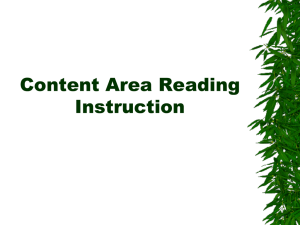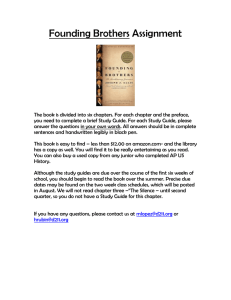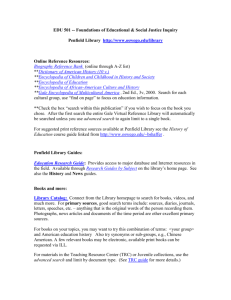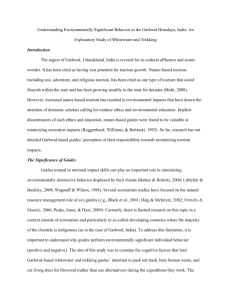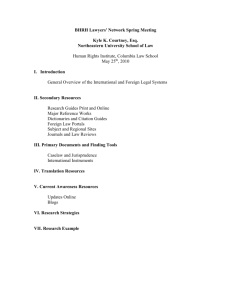(vi) Mt Gower Risk Assessment
advertisement
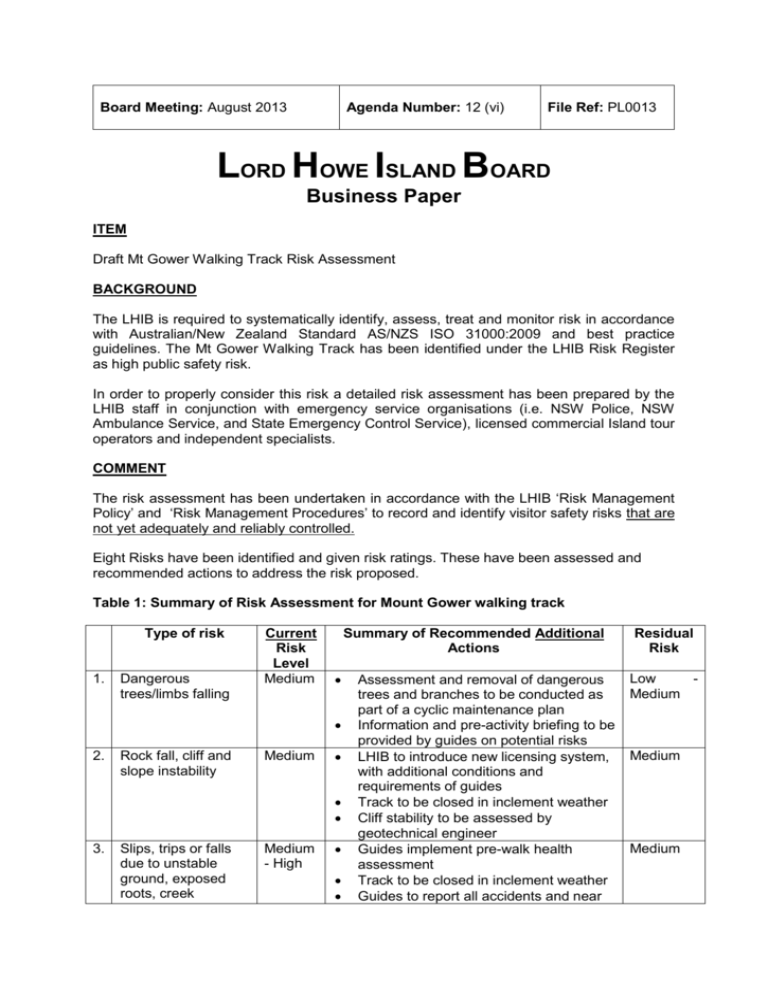
Board Meeting: August 2013 Agenda Number: 12 (vi) File Ref: PL0013 LORD HOWE ISLAND BOARD Business Paper ITEM Draft Mt Gower Walking Track Risk Assessment BACKGROUND The LHIB is required to systematically identify, assess, treat and monitor risk in accordance with Australian/New Zealand Standard AS/NZS ISO 31000:2009 and best practice guidelines. The Mt Gower Walking Track has been identified under the LHIB Risk Register as high public safety risk. In order to properly consider this risk a detailed risk assessment has been prepared by the LHIB staff in conjunction with emergency service organisations (i.e. NSW Police, NSW Ambulance Service, and State Emergency Control Service), licensed commercial Island tour operators and independent specialists. COMMENT The risk assessment has been undertaken in accordance with the LHIB ‘Risk Management Policy’ and ‘Risk Management Procedures’ to record and identify visitor safety risks that are not yet adequately and reliably controlled. Eight Risks have been identified and given risk ratings. These have been assessed and recommended actions to address the risk proposed. Table 1: Summary of Risk Assessment for Mount Gower walking track Type of risk 1. Dangerous trees/limbs falling Current Risk Level Medium Summary of Recommended Additional Actions 2. Rock fall, cliff and slope instability Medium 3. Slips, trips or falls due to unstable ground, exposed roots, creek Medium - High Assessment and removal of dangerous trees and branches to be conducted as part of a cyclic maintenance plan Information and pre-activity briefing to be provided by guides on potential risks LHIB to introduce new licensing system, with additional conditions and requirements of guides Track to be closed in inclement weather Cliff stability to be assessed by geotechnical engineer Guides implement pre-walk health assessment Track to be closed in inclement weather Guides to report all accidents and near Residual Risk Low Medium Medium Medium crossing etc. 4. Walkers becoming lost in a remote location Low 5. Failure of the rope and anchor system High 6. 7. 8. Failure of communications Risk of injury or illness to walkers due to their skill, experience and fitness levels. Exposure of walkers to elements resulting in heat stroke, heat exhaustion, dehydration or hypothermia. High Medium Low misses using prescribed form Children to be accompanied by adult LHIB to introduce new licensing system, with additional conditions and requirements of guides Reduce guide to participant ratio Adequate directional markers are in place where disorientation is high Review the design of the anchor system Implement recommendations of Rope Audit Guides to provide pre-activity briefings on the use of ropes Black spot mapping for UHF radio system upgrade Communication plan for incidents Potential use of Satellite Phones Guides to screen customers for health assessment Medical Indemnity form Guides to have First Aid Training and have appropriate sized first aid kit Walkers must have appropriate clothing and adequate fluid/food, sunscreen Low Medium Medium Low Low Provided these recommendations are implemented the residual risk assessment is less than high and is considered acceptable. The risk assessment recommends a number of proposed actions including: introduction of a new commercial tour operator licensing system which includes: - restrictions on participation - pre-activity planning and briefings regular audits and maintenance of equipment and infrastructure as part of Asset Management System; and training. RECOMMENDATION It is recommended that the Board note the attached information. Prepared David Kelly Manager Environment & Community Development Endorsed Bill Monks Acting Chief Executive Officer



